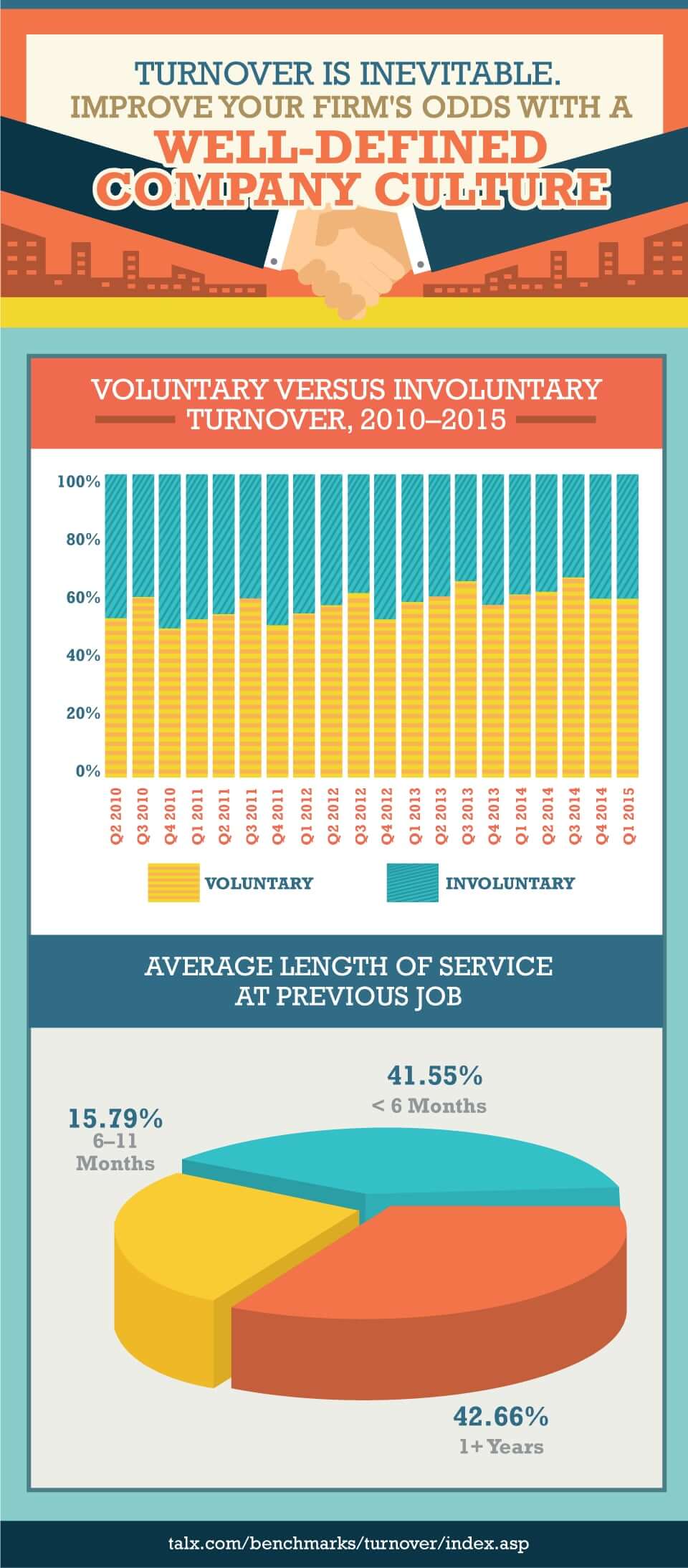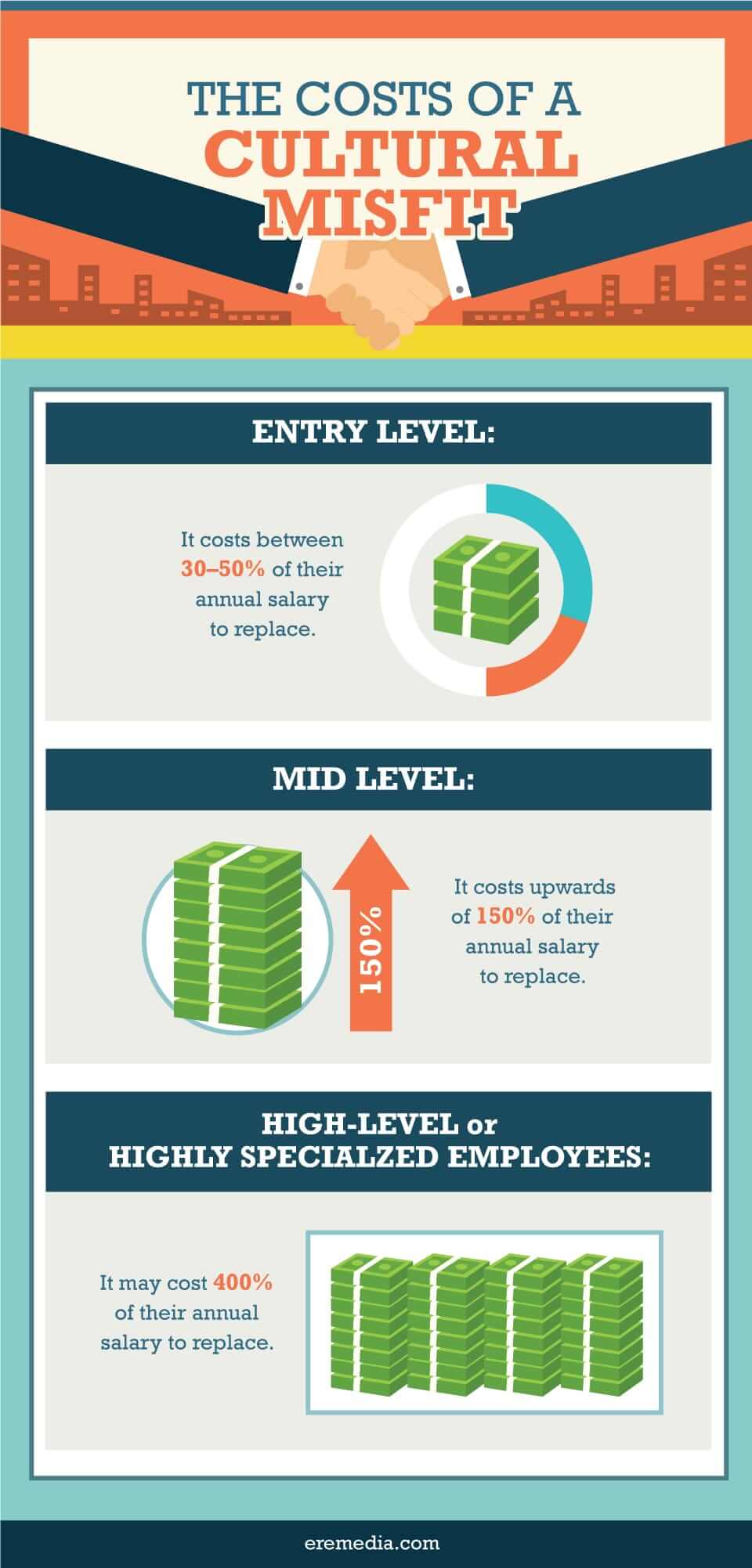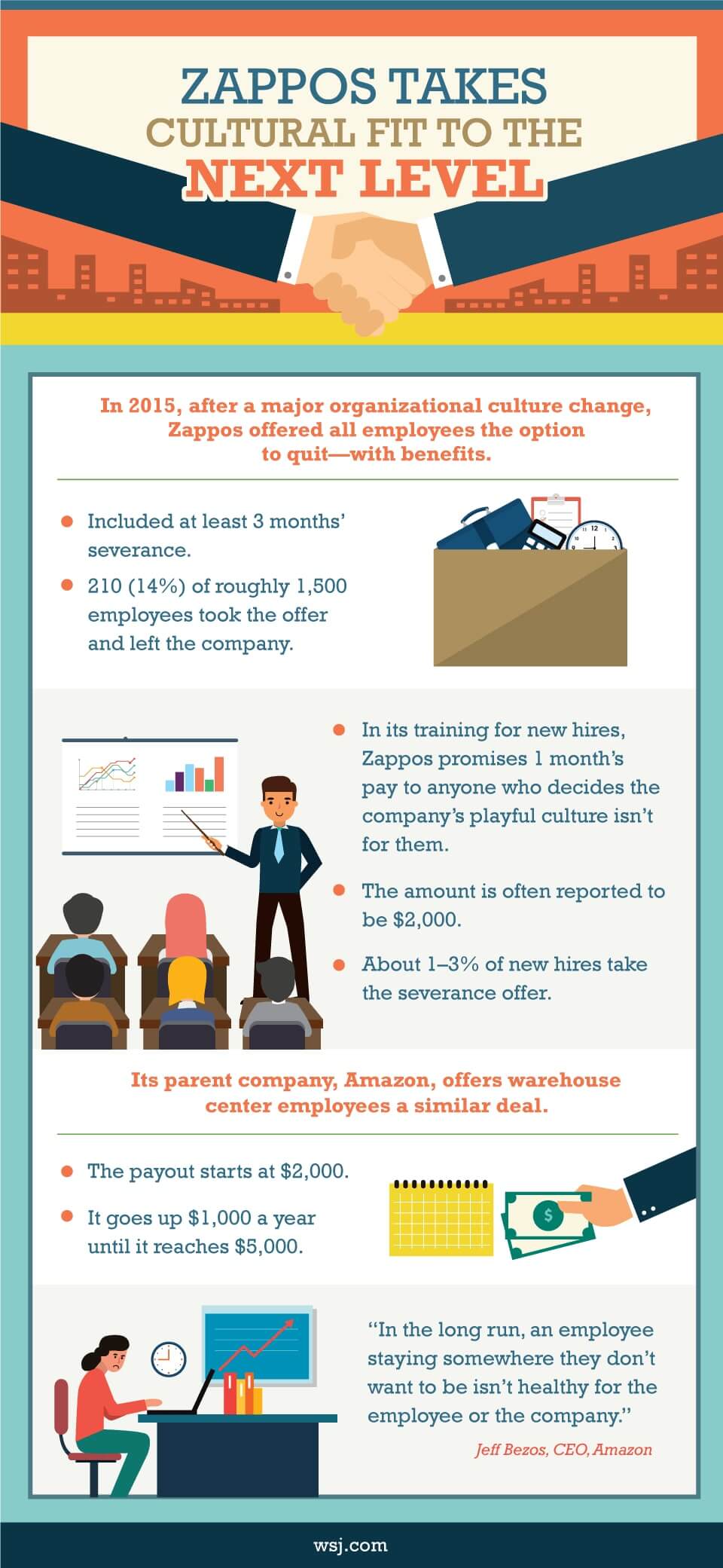
An anthropology cliché tells us that culture is to humans what water is to fish. You probably don’t think about it, but your family has a culture. So does your neighborhood and your country. Your workplace most definitely has a culture.
Fish can get by without knowing much about the element that sustains them, but humans get in trouble when we fail to understand the culture we live in. A nation going through an identity crisis can bring out the worst in its citizens (just turn on the news). A business that can’t define its culture will hire the wrong people and ultimately lose clients.
Recent studies have shown that organizational culture is a major factor in employee retention, productivity, and satisfaction. It’s often the first thing job seekers look for in a workplace, and numerous studies suggest that “cultural fit” should be the most important consideration when hiring new employees.
Recruiting firms must define and maintain a healthy culture of employees who genuinely care about candidates, the firms they serve, and the industry. When you hire with culture in mind, your firm will consistently outperform agencies that ignore it. As one expert put it, culture equals cash.
Organizational culture is the personality of your company. It can be something you think about and define in a mission statement or a guarantee, or you may be oblivious to it. Either way, culture affects every aspect of your relationship with your clients, your employees, your talent pool, and even the environment and the global economy. You ignore it at your own risk.
As with human culture, there is no good or bad, right or wrong. Not every country needs to be a western democracy, and not every company needs to allow napping and hoodies. Some employees don’t want the freedom to set their own hours, and some bosses don’t want to rule from the top down.
What matters is that you have a clear understanding of your organizational culture, whatever it may look like. Without that understanding, business becomes a nightmare. You don’t know who to hire and who to let go. When someone leaves, you don’t know why. Clients and employees get upset or lose interest and you don’t know how to bring them back.
On the other hand, recruiting firms and staffing agencies that are in touch with their values know exactly what they want and who they’re looking for. Because of this, their talent pipeline grows, candidates and clients trust them, and success is inevitable.

A talk with your team about organizational culture should be the first step in your hiring process, not an afterthought once you already have a new hire. Everyone in your organization needs to understand its culture, inside and out, if you hope to align their work with company values.
Your organizational culture is only as good as your organization’s understanding of it. Culture needs to be taught and reinforced. This is why people take oaths, repeat mottos, and get tattoos.
The style of this meeting depends on the style of your agency. Maybe you want everyone’s input, or maybe you circulate a memo like Jerry Maguire. What matters is that you have the culture talk.
You can’t know where you’re going without some idea of where you came from. Discuss your current company culture:
- What are you willing to change?
- What are you unwilling to change?
- Who do you want to be?
One of the most important tools recruiting agency managers need when training new hires is a solid onboarding program. During your audit of your firm’s culture, determine how you can instill your values (and make sure a new hire is a good fit) during your onboarding program. It’s also during this initial training period that you can emphasize the importance of your employee handbook.
Nations draw up charters and constitutions; clubs have oaths and rules. In John Spence’s Letters to a CEO, he recommends writing down your “strategic execution plan” and keeping it brief:
“I try as hard as I can to get the entire strategy down to 10 pages or less. I then bind that into a book … I tell everyone to bring the book to any and every meeting where we’re going to make a strategic decision.”
Spence sees the handbook as an essential part of a healthy organizational culture. Yet he found that a mere 10 to 15 percent of businesses he’s worked with actually develop and use such a document. He describes this blind spot as “money left on the table.”
A small gaming company called Valve boasts higher profits per employee than Google and Apple. They credit much of this success to an employee handbook that turns over almost all power to the staff. It reads: “This company is yours to steer toward opportunities and away from risks. You have the power to greenlight projects. You have the power to ship products.”
Your staff—from managers to recruiters to administrative employees—have power to affect your agency’s brand. With their help, you can make sure clients and candidates know their needs are important and are treated as such. In your handbook, share guidelines for exercising that power with your firm’s reputation in mind, and invite long-term employees to share best practices they’ve learned from their years in the trenches.
According to Spence’s research, engaged and satisfied employees increase your profitability by 100 to 189 percent. Disengaged employees can cost upwards of 20 percent of your total revenue.
Happy employees will work for less. A group of recent college grads were willing to take an average pay cut of seven percent if it meant doing work they found satisfying and engaging. “Your best people are your most valuable asset,” says Spence, “but your worst people are your top liability.”
Again, this is often an overlooked strategy for success. Everyone wants to increase productivity and cut costs, but few businesses start by optimizing workplace culture. Everyone wants talented employees, but few organizations are willing to foster a culture that attracts them.
You can train someone in the skills they need to work for you, but you can’t teach attitude and loyalty. Experts like Spence agree, and the data indicates you should hire for attitude and train for aptitude.
If you don’t vet for cultural compatibility, you end up paying for it later. Qualifications aside, a cultural misfit can cost companies a great deal: estimates of that cost range from six to nine months of the replaced employee’s salary. But some studies “predict the cost is even more—that losing a salaried employee can cost as much as two times their annual salary, especially for a high-earner or executive level employee.”
- The cost of training and onboarding
- Interview expenses
- Advertising costs for job postings
- Lowered engagement
- Productivity of new hires
- Impact on morale and the gossip machine
- Less effective service

One way to assess an applicant’s fit is to ask them. Ask about their cultural values and see how those align with yours. Katie Bouton shares questions you can ask to get the conversation going:
- What type of culture do you thrive in?
- What values are you drawn to and what’s your ideal workplace?
- Why do you want to work here?
- How would you describe our culture based on what you’ve seen? Is this something that works for you?
- What best practices would you bring with you from another organization? Do you see yourself being able to implement these best practices in our environment?
- Tell me about a time when you worked with/for an organization where you felt you were not a strong culture fit. Why was it a bad fit?
Schedule separate interviews with human resources or give them a seat at the interview table.
The number one thing Millennials want to know about your company is its culture and values, according to LinkedIn’s 2016 jobs report. Young people tend to leave if those values turn out to be a bad fit. In fact, 30 percent of those in the LinkedIn study said they didn’t see themselves working more than a year at their current job. This generation simply won’t tolerate a work environment where they don’t fit in.
Hiring based on core values is not about recruiting clones. If you find that your values lead you to interview and hire candidates who are all the same, you may have to reexamine those values. The principals that really matter can be found in many fields and backgrounds. Bouton makes this point brilliantly:
“For example, if collaboration is a key organizational value, people who have a genuine, authentic belief in the value of collaborative work will be a stronger culture fit than those who are more comfortable as individual contributors. This doesn’t mean that only people who come from one particular background or have one particular set of experiences are collaborative. A savvy hiring manager knows that a deep-rooted belief in collaboration could just as easily be found in a candidate with a corporate background as a candidate who has worked in the nonprofit sector or a candidate who has spent most of her career in the military.”
So you’ve had the family meeting, drafted a handbook, and assembled your tribe. Now for the hard part.
Staying true to your company culture means you will have to turn away people who aren’t compatible with those values. Sometimes those people are going to be talented and qualified and hard to reject.
However, think back to what John Spence said about the liability of employee disengagement. It’s just too expensive to employ someone who doesn’t want to be there or who’s bound to be miserable and unproductive in your work ecosystem. Your candidate pipeline can tell when a recruiter isn’t fully invested in them, and your clients may feel as though a placement isn’t the right fit because of poor due diligence on a recruiter’s part. Avoid putting your candidates and clients in a bad position (literally and figuratively) by ensuring your employees are the right fit for your team.
In one extreme example, the online retailer Zappos has made a bold commitment to cultural loyalty. They offer employees $2,000 to quit.

Zappos is a company built on a clear cultural vision. Founder Tony Hsieh and his team agreed on one key value before they even decided what to sell—they put the customer’s experience first.
This online retailer empowers their employees to do literally anything for the customer, even if it costs the company money—even if it has nothing to do with shoes or the other products they sell. The result is billions in sales, 75 percent of which comes from repeat customers, as well as free marketing in the form of headlines and word-of-mouth advertising that praises outlandish acts of customer service.
The stories are legendary: Zappos’ customer service team helped someone order a pizza. They once rushed shoes to a groom who ordered the wrong size—on the day of his wedding. They talked to one woman for 10 hours because she “just needed to talk.” Company policy is that if you can’t find the shoes you want, they’ll help you order from a competitor.
Tony Hsieh thinks of customer service as marketing. “We actually want to talk to our customers,” he says. Time on the phone is a rare chance to get a customer’s undivided attention, something any marketer would kill for.
Most call centers have a policy based on a metric of average handle time, and the goal is to get customers off the phone as fast as possible in order to process a high volume of calls. Zappos, in keeping with its organizational culture, takes the opposite approach and sees exceptional customer experience ratings because of it.
Zappos will let you try the company on like a shoe, and if it isn’t a good fit, they pay you to leave. At first glance this may sound like feel-good nonsense, but it’s really shrewd business. In an article for The Washington Post called “Why more companies should pay employees to quit,” Jena McGregor writes:
“Employers could potentially pay more than $2,000 or $5,000 in severance if they decided to lay off those disengaged workers in the future, rather than motivating them to leave of their own accord. They also risk fewer termination-related lawsuits if more of their workers choose to leave on their own.”
This policy is an investment in organizational culture as a hiring metric. Zappos needs people who are committed to their business vision. They know that vision isn’t for everyone, and they are willing to pay to find out who shares their commitment.
Culture, like marketing, is an act of storytelling. A company that sets itself apart culturally gets to tell a different story from everyone else. “We need to get customers off the phone quickly” is one story, while “We want to talk to our customers” is another. In the world of recruiting, this difference marks the successful firms from those that struggle.
Define your office culture, then use it during the hiring process in order to improve your recruiting efforts. Your pipeline, clients, and bottom line will thank you.



Its very useful, without read your article, it hard to think about. Thank you so much.
I have learned a lot from your article and I’m looking forward to apply Business registrationsit with my children and in my class too.